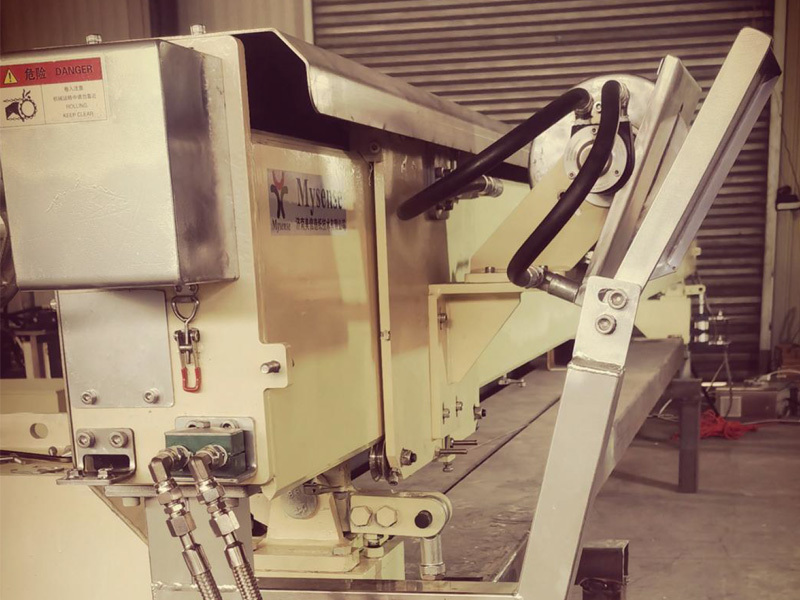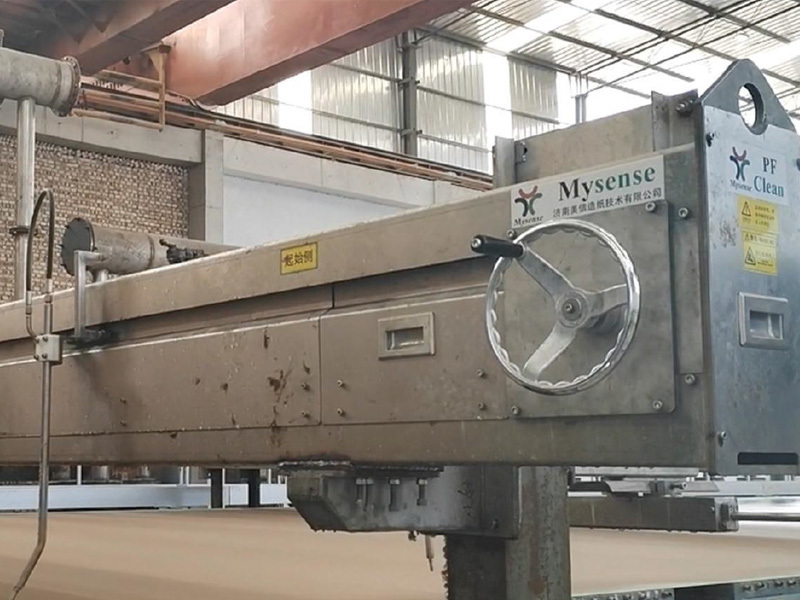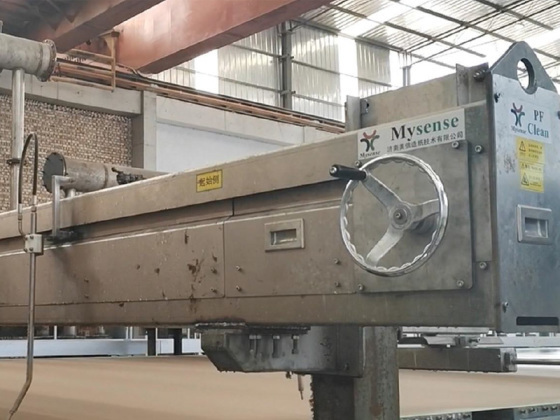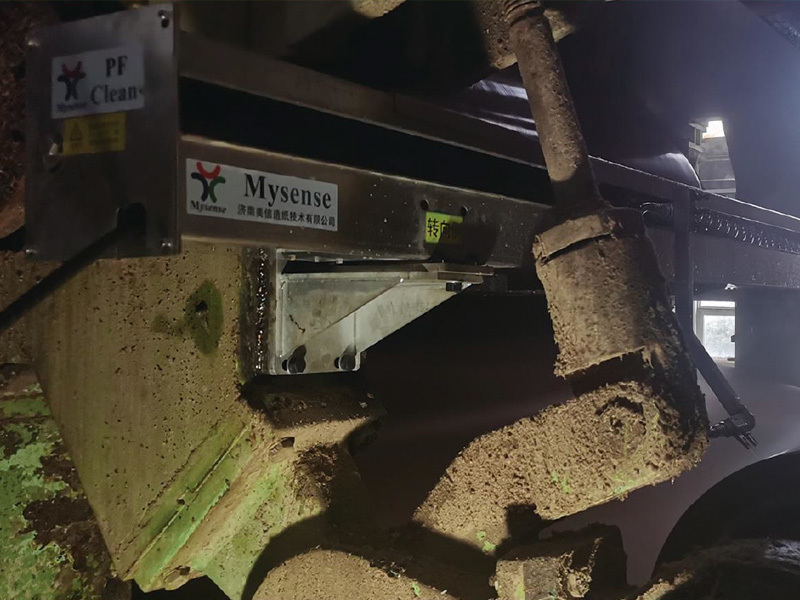Unleashing Efficiency: The Superior Quality of Precision Tail Cutters for Wet Section Machinery
Published on:
2025-10-09 09:10
Unleashing Efficiency: The Superior Quality of Precision Tail Cutters for Wet Section Machinery
Table of Contents
1. Introduction to Precision Tail Cutters
2. The Importance of Quality in Manufacturing
3. Types of Precision Tail Cutters
3.1 Rotary Tail Cutters
3.2 Fixed Tail Cutters
3.3 Custom Tail Cutters
4. Key Features of Superior Quality Precision Tail Cutters
4.1 Material Composition
4.2 Design and Ergonomics
4.3 Precision Engineering
5. Applications of Precision Tail Cutters in Wet Section Machinery
5.1 Manufacturing Processes
5.2 Quality Control
5.3 Waste Reduction
6. Benefits of Using Precision Tail Cutters
6.1 Enhanced Production Efficiency
6.2 Cost-Effectiveness
6.3 Improved Product Quality
7. Maintenance Tips for Precision Tail Cutters
8. Frequently Asked Questions (FAQs)
9. Conclusion
1. Introduction to Precision Tail Cutters
Precision tail cutters are indispensable tools in the manufacturing industry, specifically designed for wet section machinery. These devices play a crucial role in ensuring that products meet stringent quality standards while optimizing production processes. The advent of advanced manufacturing techniques has pushed the demand for high-quality tail cutters, which can significantly impact overall performance and efficiency.
2. The Importance of Quality in Manufacturing
In today's competitive manufacturing landscape, the quality of tools and machinery makes a significant difference. Superior quality precision tail cutters enhance operational efficiency and contribute to reducing production costs and waste. Companies that invest in high-quality tools often experience increased customer satisfaction due to the improved quality of finished products.
3. Types of Precision Tail Cutters
When it comes to precision tail cutters, several types cater to various manufacturing needs. Understanding the different types can help businesses make informed purchasing decisions.
3.1 Rotary Tail Cutters
Rotary tail cutters are designed to rotate at high speeds, making them ideal for cutting through thick materials. Their design encourages a clean cut while minimizing the risk of damage to surrounding areas.
3.2 Fixed Tail Cutters
Fixed tail cutters, on the other hand, remain stationary during the cutting process. This type is advantageous for precision work, allowing manufacturers to achieve accurate cuts without excessive movement.
3.3 Custom Tail Cutters
Custom tail cutters can be tailored to meet specific manufacturing requirements. Whether it's a unique shape or material, these cutters provide versatility and adaptability for specialized applications.
4. Key Features of Superior Quality Precision Tail Cutters
Investing in superior quality precision tail cutters is vital for achieving optimal performance in manufacturing. Here are some key features that distinguish high-quality options from standard ones.
4.1 Material Composition
The material used in manufacturing precision tail cutters plays a pivotal role in their durability and performance. High-quality steel and carbide composites are often preferred for their strength and longevity, providing reliable cuts over extended periods.
4.2 Design and Ergonomics
An ergonomic design enhances user comfort and control, allowing operators to work efficiently without straining their hands or wrists. This aspect is crucial for tasks requiring prolonged use of precision tools.
4.3 Precision Engineering
Precision engineering ensures that each cutter is manufactured to exact specifications. This meticulous attention to detail results in sharper, more effective cutting tools that can handle the demands of modern manufacturing processes.
5. Applications of Precision Tail Cutters in Wet Section Machinery
Precision tail cutters find their place in various applications within wet section machinery. Their versatility makes them suitable for multiple manufacturing processes.
5.1 Manufacturing Processes
These cutters are integral to numerous manufacturing processes, such as paper production, textile manufacturing, and more. Their ability to provide clean cuts without damaging the material is essential for maintaining product integrity.
5.2 Quality Control
Implementing precision tail cutters contributes significantly to quality control efforts. By ensuring that cuts are consistently accurate, manufacturers can reduce defects and improve overall product quality.
5.3 Waste Reduction
One of the significant advantages of utilizing precision tail cutters is waste reduction. By achieving cleaner cuts, manufacturers can minimize material waste, leading to cost savings and a more sustainable production process.
6. Benefits of Using Precision Tail Cutters
The benefits of employing precision tail cutters in wet section machinery extend beyond mere efficiency. Here are some of the noteworthy advantages:
6.1 Enhanced Production Efficiency
Precision tail cutters streamline the cutting process, enabling manufacturers to increase output without compromising quality. This enhancement translates to better productivity and profitability.
6.2 Cost-Effectiveness
While high-quality precision tail cutters may require a larger initial investment, their durability and reliability lead to lower maintenance costs and longer service life. Over time, this results in significant savings for manufacturers.
6.3 Improved Product Quality
Utilizing precision tail cutters ensures that products are crafted with a higher level of quality. The accuracy of cuts translates to superior finished products, contributing to customer satisfaction and loyalty.
7. Maintenance Tips for Precision Tail Cutters
To ensure the longevity and performance of precision tail cutters, proper maintenance is essential. Here are some key tips to keep them in optimal condition:
1. **Regular Cleaning**: After each use, clean the cutters to remove debris and residue that may affect performance.
2. **Blade Sharpening**: Regularly inspect and sharpen blades to maintain cutting efficiency.
3. **Storage**: Store precision tail cutters in a dry, safe place to prevent rust and damage.
4. **Inspection**: Periodically check for signs of wear or damage, addressing any issues promptly to prevent further deterioration.
8. Frequently Asked Questions (FAQs)
1. What is a precision tail cutter?
A precision tail cutter is a specialized tool used in manufacturing processes to achieve accurate and clean cuts, particularly in wet section machinery.
2. How do I choose the right tail cutter for my needs?
Consider factors such as the material composition, type of cutter (rotary, fixed, or custom), and the specific manufacturing processes you intend to use it for.
3. Are precision tail cutters expensive?
While they may have a higher initial cost, the longevity and reliability of high-quality precision tail cutters often lead to lower overall costs due to reduced maintenance and replacement needs.
4. How can I maintain my precision tail cutters?
Regular cleaning, blade sharpening, proper storage, and periodic inspections are essential to maintain the performance of precision tail cutters.
5. What industries benefit from using precision tail cutters?
Industries such as paper manufacturing, textiles, and other sectors that require precise cutting tools benefit significantly from using precision tail cutters.
9. Conclusion
In conclusion, precision tail cutters are vital tools in wet section machinery that enhance efficiency, reduce waste, and improve product quality. By understanding the various types, key features, and benefits of these cutters, manufacturers can make informed decisions that positively impact their operations. Investing in superior quality precision tail cutters not only ensures exceptional performance but also fosters a more sustainable and profitable manufacturing environment. As the industry continues to innovate, the role of precision tail cutters will only become more critical, solidifying their place as an indispensable asset in modern manufacturing.
Latest News







